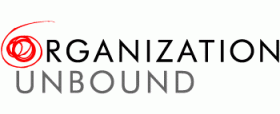-
I’m stumbling along, trying my best to remain in the single file line the path has forced us to form. We crest the hillside, overlooking a quiet river freckled with boulders and dragonflies. I overhear Jonathan and Kirsten chatting in front of me. They are introducing themselves, having only just met on this day-hike organized through the Cape Town Hiking Group.
I hear Kirsten say that she works for the National Treasury. I’m intrigued, but only able to pick up the bits and pieces of conversation that the wind is kind enough to blow my way. She is speaking passionately about her work and I hear her say something about using Gestalt to help improve government spending. I try to puzzle together the definition of Gestalt from the recesses of my brain. I vaguely recall my step-
 mother mentioning it in relation to her therapy practice, and I have a faint memory of it coming up in one of my social work courses in grad school. I’m eager to learn more, but decide that I need to pay more attention to the relationship between my feet and the rocky escarpment we’re now descending. I am left wondering what psychotherapy has to do with managing the South African government coffers.
mother mentioning it in relation to her therapy practice, and I have a faint memory of it coming up in one of my social work courses in grad school. I’m eager to learn more, but decide that I need to pay more attention to the relationship between my feet and the rocky escarpment we’re now descending. I am left wondering what psychotherapy has to do with managing the South African government coffers.A few weeks following the hike, we met with Kirsten and her Technical Assistance Unit (TAU) colleagues to find out more. We were surprised to hear that they have been deeply immersed in the theory and practice of Gestalt over the past seven years. Not only are they finding it extremely helpful in their technical assistance work, but also in the functioning of their own department. I was impressed that, given their important but rather dry government mandate of “improving the quality of spend in the public sector”, they would gravitate towards such a process-oriented approach.
We learned that Gestalt does indeed have its roots in psychotherapy, but has a 40-year history of being applied in the field of organizational development and management consulting.
In the context of TAU’s work, Gestalt helps government departments learn to “stay in awareness” longer before taking action. They become more conscious of what they (as human beings) and others in the larger system are experiencing and then use this experiential knowledge as the building blocks for subsequent plans and actions. Gestalt is an iterative process, emphasizing human experience throughout the lifecycle of a project or program. In essence, TAU is helping to infuse a “profound human centredness” into the way that the government runs.
I was particularly drawn to the Paradoxical Theory of Change that underpins the Gestalt approach:
Gestalt theory holds that a meaningful change process starts with a focus on what is rather than any imagined future state…and by exploring this in detail, energy for ‘what could be in the future’ organically emerges…“
Change comes from being more fully who or what we are (rather than trying to be what we are not).
I also love how Gestalt’s focus on “what is” includes an appreciation of any resistance to change that is experienced. Resistance is seen as an integral part of change, with any movement towards change naturally generating an equal force against it or for the status quo. Given this “primary law of organizational physics,” it makes sense to respect and engage with resistance rather than fight it.
One of the other interesting things about Gestalt as an intervention is that the process begins first and foremost with the intervenor. As someone helping to support an organization in its development, your first job is to pay acute attention to your own internal processes and reactions. Your presence (your heightened awareness- not you as a person) is recognized as a powerful catalyst for change: “Sometimes it is not so much what you do but how you are as you do it that brings new options for growth and development in others.”
Here’s an excerpt from a case study of one of the government departments TAU worked with that highlights this change-from-the-inside-out dynamic:
The TAU team used themselves – becoming more aware of their individual experiences and emotions -as data to inform the engagement with the client. How the client was, and how we were, became the defining starting point around which we could design, plan and implement the content, frequency and intensity of the work. This approach is the distinguishing feature of process consulting: the technical advisors see themselves as part of the process, and not separate from or unaffected by it.
We continue to be in touch with TAU and look forward to learning more about the details of their story- the challenge/ease involved in bringing such a different approach into the government landscape and how they’ve been handling the bumps and uncharted turns along the way. We’re also interested in how Gestalt becomes integrated into day-to-day organizational life and the degree to which it is leading to more expressive government departments.
To learn more about Gestalt, check out the Study Centre Gestalt International.
Reference: Technical Assistance Unit Review, Vol. 2, No. 1, 2010 December. The TAU Gestalt Journey. National Treasury Republic of South Africa. 2010. Whyley, Chantelle; Meyer, Eileen, Williamson, Charmaine; Haricharan, Shanil; and van Rensburg, Sophia.
Gestalt at the South African Treasury Department



